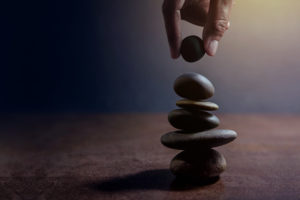As my daughter left this morning to attend Easter Sunday services with her non-Jewish boyfriend, I thought about what she might take away from that service. I know she won’t be thinking about Easter from a personal growth standpoint as I do. And, despite my own Jewish leanings and upbringing, as always, I look at every holiday – Jewish or otherwise – through a Jewish lens as well as through a human potential lens. I want to know how I can take the holiday’s spiritual traditions or messages or symbols and use them to help myself draw closer to God or to improve in some way. For those who might want to see Easter in this way, here’s what I have to offer.
From a nonreligious perspective – leaving out bunnies and eggs – we first can look at the story of Jesus, who was a Jew, carrying the cross through Jerusalem prior to his crucifixion. I believe that’s where the saying “having a cross to bear” finds its origins. At this time of year, anyone, no matter their religious or spiritual beliefs, can ask himself or herself what crosses he or she is bearing — and then put them down. We can physically, mentally and spiritually decide not to carry these crosses with us any longer.
Symbolically, we can even consider the opposite of that cross. For example, if the cross represents 25 pounds of extra weight on your body, think of a trim, fit body weighing 25 pounds less. If you are carrying an unhealthy relationship, you might think of a healthy relationship in its place. And see the cross become something light and fun to carry, rather than heavy and difficult, like a balloon or a bouquet of flowers. (Of course, just thinking about a new cross won’t manifest one; you must take some action to create it. So, take some time to figure out what “stations” you will have to stop at along the way, or steps you will have to take, so you are sure to create that new cross — or balloon or bouquet.)
Consider also the aspect of the Easter story that involves the sepulcher. Jesus’ body was placed in the cave after his crucifixion, but it wasn’t there the next day. Anyone can think about what he or she might want to place in a sepulcher, or cave, and close the door upon it only to find it has disappeared when they return — that it has been transformed or ascended. What things would you like to either be rid of or have transformed? What things would you like God’s help with so you can, indeed, transform them in some way? In the spirit of Easter, visualize them in a cave with a big stone in front of the door, and then imagine them gone or transformed into something new and better when you return. Do this like a prayer, asking for God’s help in changing these aspects of your life. Or write these things down and put them in a box and close the lid while you take steps to physically transform them into something new or better.
Last, Easter offers all people, no matter their spiritual inclination, the chance to remember the message Jesus offered about the miracles he performed. This great rebbe (yes, he was a Jewish teacher) said, “These things and more you shall do.” I think of Jesus not as “The Christ,” but as “a christ.” We can all become christed beings, humans who reach the height of spiritual enlightenment and attainment. That’s what Jesus showed us. He demonstrated what it looks like to be a christed being, someone who has reached the height of spirituality. We, too, can create miracles, he said. We, too, can become enlightened beings.
So, on Easter, when Christians celebrate the fact that Jesus was resurrected from the dead and then ascneded, I suggest all of us think about the fact that while we might not be able to ascend or create miracles in this moment, maybe we all have the potential of doing so in the future. (Judaism even contains teachings about ascension.) In the meantime, we can all work on manifesting transformation and miracles in our lives.
Happy Easter…and Passover.


